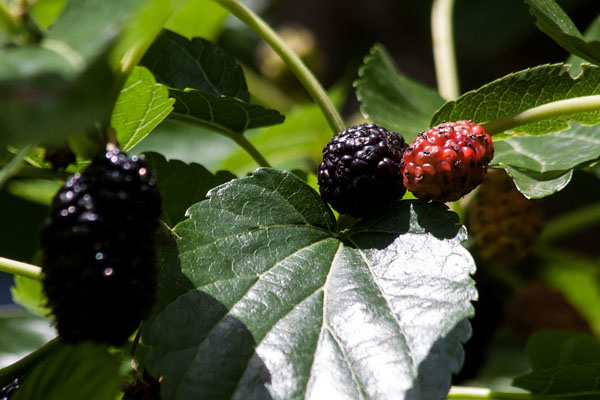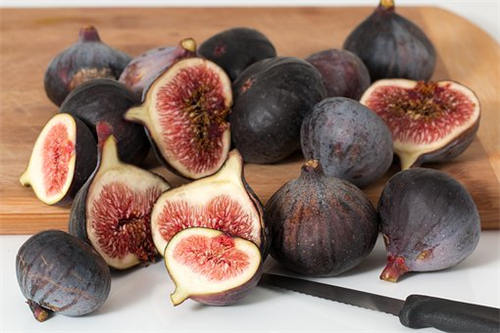How many times a year does the "god of fruit" vine blossom? How many times do you bear fruit? How can it blossom and bear fruit?
Grape is a kind of fruit tree widely cultivated in China, which is favored by the majority of growers because of its sweet taste, rich nutrition, and simple planting skills, but because there are many varieties of grapes and different planting skills, if you want to plant grapes well, you need to master the characteristics of grapes. how many times a year does the vine blossom? How many times do you bear fruit? How can it blossom and bear fruit?

How many times a year do grapes blossom? How many times do you bear fruit?
Grapes bloom at least twice a year, and each time they bear fruit. If the flowers bloom late, the fruit will not ripen. The result is usually 1 to 3 times, but it is related to the grape variety and the length of the growing period. Generally, mid-and late-ripening varieties bear fruit only once a year, such as Richmatt, milk, Klingbamak, longan, beauty finger, red earth and so on.
Many mid-precocious varieties can bear fruit many times a year, such as Jingxiu, 87-1, Panonia, Yafu Rosa, Saba Pearl, Vineyard Queen, Jingya, Kangtai, Jingyou, Jufeng, Longbao, White Banana, Jixiang, Sweet Peak, Fuji Fuji, Dabao, Xiyang Red, 8611, 8612, Beijing amethyst, Venus seedless, Seedless White Chicken Heart and so on. The varieties with multiple fruits can bear fruit several times, and the growth period is related to the length of the growing period. the secondary fruit of the mid-early-maturing varieties can mature in Gongzhuling and Shenyang, while the late-maturing varieties can not mature, and the secondary and tertiary fruits can mature in the south. Related to management technology, good management, strong trees, fast growth of secondary and tertiary fruits, can mature. In the greenhouse, properly managed, the tree is strong, seedless white chicken heart, white banana, sweet peak, Venus seedless and so on can bear fruit 4 or 5 times a year, or even achieve year-round fruit.
Planting skills:
1. Planting time: autumn planting in open field is easy to freeze to death, and autumn planting in greenhouse is not conducive to dormancy, so spring planting in open field and greenhouse is the best, the time is from January to May, after soil thawing to sprouting, but the later the growth is weaker. In addition, the greenhouse can also plant trees before building the shed.
2. Soil preparation and ridging: both the open field and the greenhouse are north-south, with a row spacing of 1.8-2 meters, ridging along the line. Large ridges are formed in the cold-proof areas buried in winter, and small ridges are not needed in the cold-proof areas in winter. There are two ways of land preparation before raising the ridge.
3. The whole garden is deeply turned over: fermented dung is spread on the ground, usually about 5 cubic meters / mu, and more than 10 cubic meters / mu in the new shed. The content of organic matter in the old shed is higher, so there is no need to apply manure. Then turn it about 40 centimeters deep.
4. Trenching along the road: 60-80 cm deep and 80-100 cm wide. The lower part is filled with about 500 kg of weeds mixed with mature soil, and the upper part is filled with about 5 cubic meters of organic fertilizer per mu, and mixed with mature soil until filled. If the ripe soil is not enough, it can be dug from between the rows, and the heart soil can be scattered between the rows, and then the water will settle.
5. Seedling treatment: if it is a grafted seedling, carve all the buds of the rootstock, leaving only the grafted buds, and remove the binding film.
6. Pollination trees: grapes are closed pollination, do not need to be matched with pollination trees, different varieties should be planted in pieces to facilitate management.
7. Planting method: along the line, plant 0.7 meters apart and plant to one side of the ridge. The planting method is as follows.
The main results are as follows: (1) planting to one side of the big ridge in winter: ① grafted seedlings are planted obliquely to the north, and the grafting interface is about 10 cm off the ground. in the future, it will not take root above the grafting interface, and it is convenient to bury the soil to prevent cold. Pour water after planting, continue to bury the mound more than 10 cm above the graft joint when the surface is dry, and remove the mound after germination. ② cuttings are planted obliquely to the north, and the original Yin-Yang line is about 10 cm lower than the ground level. in the future, even if the ground freezes to death, it can still sprout underground. Pour a lot of water after planting, continue to bury the mound more than 10 cm when the surface is dry, and remove the mound after germination. ③ nutrition cup green seedlings planted directly, but can not bury the green vines, otherwise rotten seedlings. Pour water after planting.
(2) in winter, there is no need to bury the soil to prevent cold to plant to one side of the small ridge: ① grafted seedlings are oblique to the north, the grafting joint is about 25 cm from the ground, pour water after planting, continue to bury the soil when the surface is dry, and bury it 10 cm above the grafting interface, so that the seedlings are on the big ridge, and then pick the soil to reveal the grafting interface after germination. ② cuttings are planted obliquely to the north, the original Yin-Yang line is slightly higher than the ground level, and water is poured after planting. When the surface is dry, the soil continues to be buried about 25 cm, so the seedlings are on the big ridge. ③ nutrition cup green seedlings planted directly, but can not bury the green vines, otherwise rotten seedlings, growing season gradually buried soil, seedlings are also on the big ridge.
8. Fertilizer management
Base fertilizer was applied after fruit harvest in autumn, and 40 × 40cm deep holes were dug out along the edge of the original planting hole according to one layer of soil and one layer of organic fertilizer, mainly human and animal manure, barnyard manure, retting manure and so on. In the full fruit period, the grapes were fertilized with organic fertilizers above human 2kg per 1kg fruit. Topdressing is mainly in two periods, and one quick-acting fertilizer is applied more than ten days before flowering, such as mature manure and urine, etc. During the fruit expansion period, potassium fertilizer was applied once, such as plant ash or rotten chicken manure and so on.
Time: 2019-04-10 Click:
- Prev

How many times a year do mulberry trees bear fruit? How can we grow more fruit?
Fruit mulberry is a kind of common tree seedling in our country, its fruit is not only edible, but also can be used in industrial production, so the price is small, but because the shelf life of fruit mulberry is very short, if you want to eat mulberry, you need to know the period of mulberry fruit.
- Next

How many times a year do figs bear fruit? How to plant high yield?
Fig, also known as milk berry, is a common economic fruit tree in China. It is very popular because of its high edible value and ornamental value. How many times a year do figs bear fruit? How to plant high yield? How many times a year do figs bear fruit? Figs usually bear fruit twice a year, that is, summer fruit and autumn fruit.
Related
- Fuxing push coffee new agricultural production and marketing class: lack of small-scale processing plants
- Jujube rice field leisure farm deep ploughing Yilan for five years to create a space for organic food and play
- Nongyu Farm-A trial of organic papaya for brave women with advanced technology
- Four points for attention in the prevention and control of diseases and insect pests of edible fungi
- How to add nutrient solution to Edible Fungi
- Is there any good way to control edible fungus mites?
- Open Inoculation Technology of Edible Fungi
- Is there any clever way to use fertilizer for edible fungus in winter?
- What agents are used to kill the pathogens of edible fungi in the mushroom shed?
- Rapid drying of Edible Fungi

